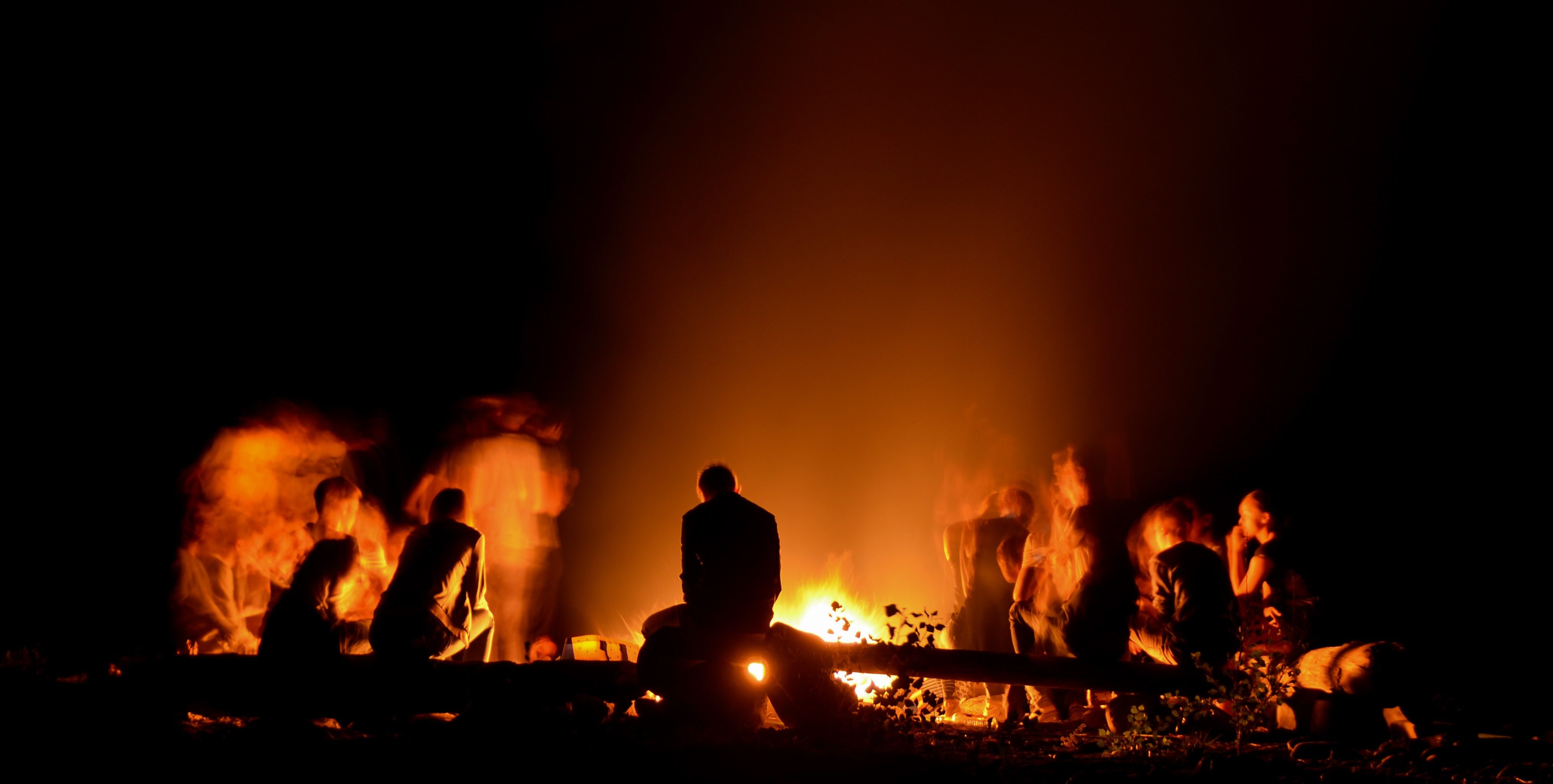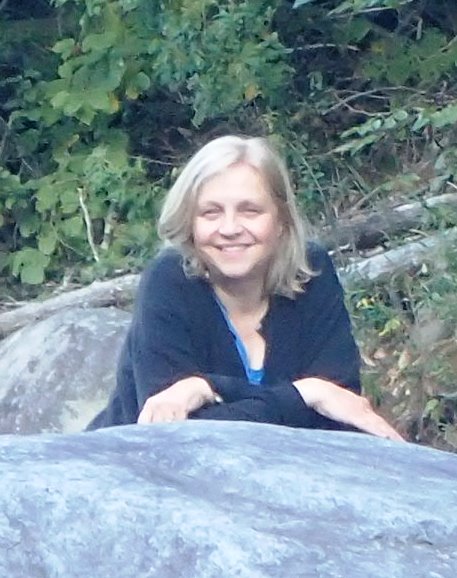Joris Voeten photo, Unsplash
***
When Teaching Was Fun
by Dr. Sue Atkinson
We gather around Maria’s campfire, under a summer night sky punctuated by stars and fireflies, with a hint of the coming fall in the air. We do this every year. Most of us are teachers, so talk of the school year to come pervades the otherwise carefree August night.
We talk of classrooms assignments, students, and new teachers, and of colleagues now departed for the greener pastures of retirement. We’re getting caught up, getting ourselves ready to approach a new school year, working to summon the energy and enthusiasm we know it deserves.
These are my former coworkers. I have gone on to higher education; these people keep me grounded, reminding me of the realities of daily work in classrooms. I went back to graduate school after many years of teaching, looking to step back, gain perspective, and understand in a different way those daily challenges.
There is much concern in this wine-lubricated conversation over new developments at school that no one seems to like very much — an unpopular superintendent, fallout from layoffs and staff realignment a few years back, ever more paperwork, too much testing, new curriculum mandates, less support for challenging students.
I have studied education policy. I know a lot about the issues they are talking about. These people know a lot too. Some have taught for decades; they’ve seen approaches, methods, and curricula, as well as countless administrators, come and go.
I lean back in the dark and sip my wine. Carolyn, next to me, turns and says, “You remember, don’t you? You remember when teaching was fun.”
When teaching was fun.
I saw every day how Carolyn worked hard and well with truly difficult students. Her job never looked fun. But I know what she means.
In the dark firelight, my thoughts spin to memories of teaching in the 1970s. I remember, as a young teacher, loading (far too many) preschoolers into my van for a spur-of–the-moment field trip, and on a summer day too hot to play, taking them wading in a fountain signed “no swimming.” Then, in the 80s, setting up early intervention programs, deciding how the programs would work —because who, other than the teachers and parents of these young children with special needs, would know what was needed? And even in the late 90s, in the more conventional setting of a public middle school, putting subjects aside for a full week to celebrate Earth Day with the entire 7th grade, hiking, doing trail work, picking up litter around town, making posters, hearing speakers, and helping students create environment-themed fabric squares to combine into a class quilt.
It’s fun when kids get excited; it’s fun to be spontaneous. It feels good to have the power to make decisions; it feels good to lead kids to see their world in new ways.
I listen as veteran teachers around the campfire lament the good old days, which seem to have been the 90s, or before, when, they recall, they weren’t micromanaged, and testing had not yet overpowered their classrooms, when they had autonomy and respect.
I remember when teachers could try things and take chances, when they could and did teach their subject in more than one way, and not just for the test. When teachers taught children as much as they taught curriculum, when we aspired to be creative and reflective, when we dared take chances. When testing was episodic, not omnipresent.
When teaching was fun… and learning was fun, too, at least some of the time.
Respect for teachers is harder to come by nowadays. In the newspapers and online, we read that teachers are to blame for many social ills. Politicians and their appointed officials dream up schemes for getting rid of “bad teachers,” with punitive evaluations and unscientifically calculated ratings based on scores from ubiquitous tests. No long ago, I attended a gathering for a liberal political candidate, and when an audience member spoke disparagingly of “teachers’ unions,” the candidate barely demurred, despite knowing there were teachers in the audience. Friends don’t hesitate to tell me straight out that they don’t want their children to become teachers.
I learned in graduate school to call the trend away from teachers exercising professional judgment and toward efficiently teaching to the test the deskilling of the teaching profession, as teachers become implementers of curriculum designed elsewhere, rather than using their skills and experience to develop or choose curricula to address specific student needs. This parallels Taylorism, the early 20th century movement in factories of breaking a job down into small, simple segments to be performed by lower-skilled workers, rather than by skilled craftspeople, and the separation of work planning and actual work, similar to teachers being told how to teach to the current standardized test.
At the campfire, talk turns to former students. Some of our own children graduated more than a decade ago, and we recall their experiences and their teachers.
Were those really the halcyon days of teaching, I wonder? Were those days before No Child Left Behind (the 2001 incarnation of the Elementary and Secondary Act that brought federal funds and regulation, beginning with programs targeted at poor children in the 1960s) the glory days? And for whom?
In these times of “making America great again,” when yearning for former times feels ominous as well as nostalgic, it’s important to ask that question. My own children’s school days in the ’90s were populated with a mix of teachers who made learning fun and meaningful and some who, well, did not. I’m not at all convinced that parents saw that time as the zenith of teaching and learning. I’m also not sure my special education students, had they had a voice, or closeted LGBT students for that matter, would have characterized those less-inclusive days as the better ones.
Now there are teacher shortages. Many of us spent our early careers scrabbling for jobs; it’s hard to see this as all bad. But who, we ask, will be there to teach our children and grandchildren? Many of us around the campfire are counting the years to retirement. Who will take our places?
I have a new crop of student teachers this fall, less numerous than in years past. They are eager, champing at the bit to drop the “student” qualifier from their title, to be teachers. I struggle to know what to say to them as they encounter curricular and testing mandates that make any I experienced pale by comparison. Stories about the good old days are the last thing they need.
New teachers are told repeatedly (I know because I’m telling them) that they must prepare to work in increasingly diverse classrooms. That’s how we describe classrooms that comprise students who differ in race and ethnicity, in language, in ability, and in family income and resources from some imagined typical student. Preparing teachers to meet this reality with teaching practices and attitudes that are inclusive and effective is a good thing.
I recall a student teacher, John, an eager, smart, and skilled young man and promising future teacher. The kids at his elementary school love him to pieces. Earlier, I’d seen him work well with a difficult middle school class on a lesson he designed. Today, he is doing a scripted reading lesson with a small group of fourth graders. He struggles as the kids look bored, are off-task, and misbehave. Afterward, we de-brief.
I wonder aloud if a different book, perhaps something more story-like to draw the students in, but with the same topic and theme, could be used, rather than this dry book about seashore animals. “No,” John says. “That book is required, at least in this school.” Common Core State Standards are being “unrolled” at this time, and non-fiction reading material is de rigueur.
“Have the kids ever been to the beach?” I ask.
“We’re not supposed to spend time talking about that, just the text.”
I shake my head, but I know Common Core, strictly followed, precludes activating prior knowledge or finding personal connections with the text. But how then is John to draw these students in? How am I to help John?
I sigh. We teachers know lots of ways to get kids involved and excited about what they are reading. I want to share them, but my hands are tied. Instead, I recommend incentives (rewards) for engaging with the lesson. This should be a last resort, not the first, John and I both know.
My student teachers have varying experiences teaching Common Core-aligned curriculum in their schools, as they will have in their eventual teaching jobs. The luckier ones will be told that the standards are goals that students must reach, but they will have a say in how they help them get there. They will respond to their students’ diverse needs using their professional knowledge of each child. The unlucky ones will be given a script to teach from, be pressured to be on the right page at the right time, and get lip service about the needs of students who can’t keep up. They will be told they must respond to student diversity with yet more test preparation.
It’s getting late and harder to ignore the chill in the air. Some at the gathering pack up and say their goodbyes, full of good wishes for enjoying the waning summer. Carolyn and I pull closer to the fire. I turn to her. “Yes,” I say. “I do remember.” I needed that reminder. I wonder if I’d dare tell my story of impromptu field trips to my student teachers. Nevertheless, they need to know that along with relentlessly hard, important work, there is the possibility that, sometimes, teaching can be fun.
About the author:
Dr. V. Sue Atkinson is semi-retired from a career teaching and supervising programs for infants through high school students, working with both typically developing children and students with identified disabilities. At SUNY Binghamton and Cortland, she trained teachers to work with these students with an emphasis on inclusive teaching practices. Sue continues this work part-time and writes on topics related to education, policy, child development, and disability.


Recent Comments